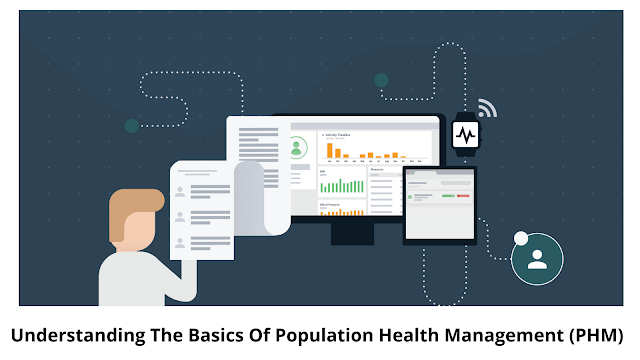Understanding The Basics Of Population Health Management (PHM)
Several healthcare organizations have set population
health management (PHM) as a priority for formulating value-based
reimbursement and risk adjustment. It has been noted that many caregiver-led
accountable care organizations that are not supported by a hospital or health
system, have also started to utilize population health management platforms.
Population health management refers to an
improvement in the outcomes of clinical health of a specified group of people
by greater coordination of healthcare as well as patient involvement supported
by suitable models of cost and treatment. The analytical tools of the
Population Health Management Platform help to enhance the quality and
cost-effectiveness of care by using comprehensive data.
Components of Population Health Management
The optimal population health management
approach includes high-risk care management and therapeutic procedures that
help to lower the risk level. It contributes to diagnosis along with the
assessment of the health of moderately risked individuals.
The basic components of PHM include:
1.
Data-driven clinical
decision-making
2. Primary care-led clinical care-managers
3. Patient involvement along with community
integration
4. Trends of health determinants
5.
Policies and timely
interventions
How Does Population Health Management Work?
With the help of population health management
solutions, health organizations and clinicians can understand and formulate
better care plans, monitor patient outcomes, and improve the healthcare
outcomes of a community quantitatively. The PHM enables care providers to use
reliable patient data to support effective and efficient care proactively. It
also helps to mobilize community people to expand the reach of a primary care
team. The PHM also plays its role in linking patients with vital resources by coordinating
with community players.
Population Health Management Software
Healthcare organizations are acquiring population
health management software to manage public health. Information technology
helps to analyze patient population data to devise a future strategy. The
healthcare providers gain data insights to deliver value-based care by
utilizing PHM software that offers:
·
Tools to coordinate care
·
Help to evaluate patient
participation
·
Help to diagnose, track,
intervene for appropriate care
·
Analyze health
information for a group of individuals
·
Facilitate data exchange
among electronic health records and other databases
Goals of Population Health Management
One of the goals of the PHM is to use patient
risk scores to divide patient populations into subpopulations based on health,
lifestyle, and medical history. This technique assists providers to understand
their requirements in healthcare.
It helps to determine
how resources in healthcare may be used to improve management efforts at
reduced cost. Apart from providing clinical data, PHM also includes the payers
for providing care teams, claim data and risk-adjustment.


.png)
Comments
Post a Comment
Please do not enter any spam link in the comment box